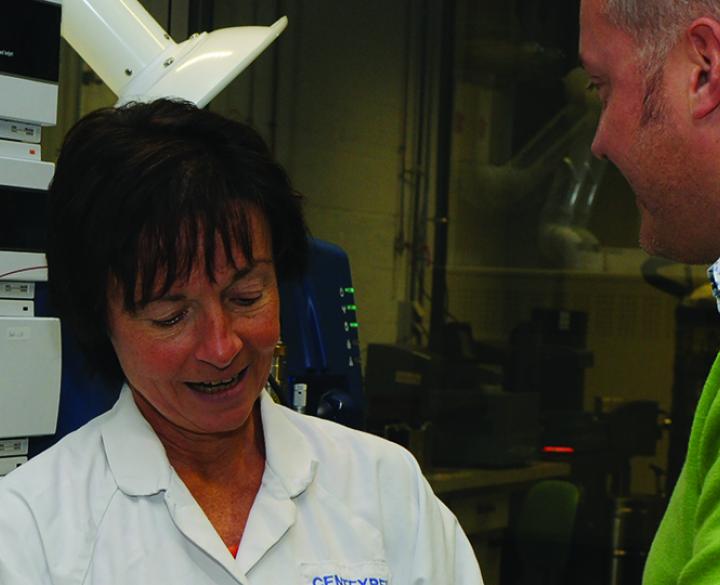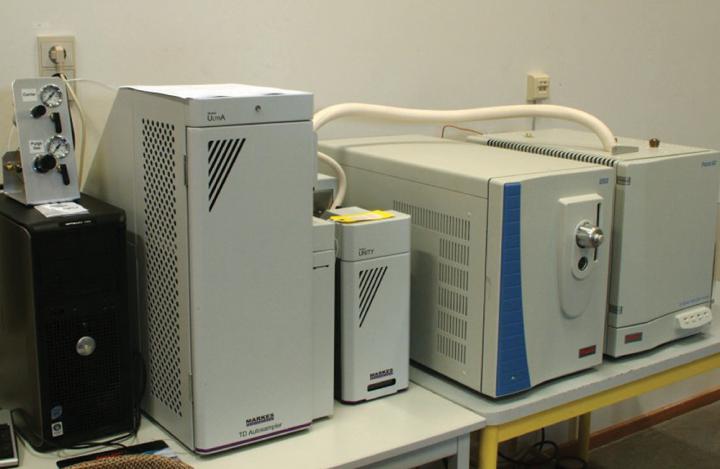REACH and the need of assessments
Centexbel offers a set of tests to detect the presence of Substances of Very High Concern [SVHC], as defined by REACH legislation. This quick analysis enables manufacturers, textile finishers, importers, retailers and brands to meet the REACH SVHC obligations.
Twice a year, the European Chemicals Agency (ECHA) extends the candidate list for authorisation for (chemical) substances of very high concern. Each company has to report to its professional customers the presence of one of these substances in a concentration exceeding 0,1 weight percentage in its products.
Also companies importing goods from outside Europe that will be sold on the internal market are submitted to these rules.
The actual list of SVHC includes a number of substances used in textiles and plastics:
- flame retardants: Decabromodiphenylether (Deca-BDE) Hexabromocyclododecane (HBCDD)
- PVC Softening agents: Benzyl butyl phthalate, Bis (2-ethyl(hexyl)phthalate) (DEHP), Dibutyl phthalate
- dyestuffs: Cobalt dichloride
The Centexbel REACH test package is developed to evaluate both preparations and products, detecting all substances of very high concern in a qualitative way.
The REACH SVHC test package includes
- thermal extraction at 120°C to detect the presence of organic compounds
- X-Ray Fluorescence measurement (XRF) to determine the contents of heavy metals (Co, As,…), and/or halogens (Cl, Br,…)
- ICP-MS to determine the boron content
- LC-MS: additional test to detect the remaining substances of very high concern
X-ray fluorescence is used to identify elements from sodium to uranium. Mapping techniques visualize and provide an estimation of the concentration.
The Orbis XRF analyzer, equipped with a polycapillar lens, measures spots from 30 µm to 2 mm.
Gas chromatography (GC) is a common type of chromatography used in analytical chemistry to separate and analyse compounds that can be vaporized without decomposition.
CMR substances
Centexbel assesses all substances classified as "carcinogenic, mutagenic or toxic for reproduction" (CMR) according to the European Regulation 2018/1513:
- Formaldehyde: ISO 14184-1 (2011)
- Extractable metals: ISO 16711-2 (2015)
- Thermal extraction (internal GCMS method)
- Allergenic dyes: DIN 54231 (2005)
On 10 October 2018, the EU Commission published Regulation (EU) 2018/1513 amending REACH Annex XVII restricted substances list and restricting certain substances classified as carcinogenic, mutagenic or toxic for reproduction category 1A or 1B in apparel, footwear and other textile consumer products.
The restriction applies to the following products for consumer use:
- clothing or related accessories
- textiles other than clothing which, under normal or reasonably foreseeable conditions of use, come into contact with human skin to an extent similar to clothing, excluding disposable textiles
- footwear
The restriction does not apply to:
- clothing, related accessories or footwear, or parts of clothing, related accessories or footwear, made exclusively of natural leather, fur or hide;
- non-textile fasteners and non-textile decorative attachments;
- second-hand clothing, related accessories, textiles other than clothing or footwear.
- wall-to-wall carpets and textile floor coverings for indoor use, rugs and runners.
In addition, the restriction does not apply to personal protection equipment (PPE) defined in Regulation (EU) 2016/425 and medical device defined in Regulation (EU) 2017/745.
Samples
Send your samples to:
Centexbel - chemical lab
Technologiepark 70
9052 Gent-Zwijnaarde
Belgium
+32 9 220 41 51
gent@centexbel.be






